Gymnosperms - Definition, Examples, Quiz, FAQ, Trivia
Discover plants with naked seeds that don't need flowers to reproduce!
What are Gymnosperms?
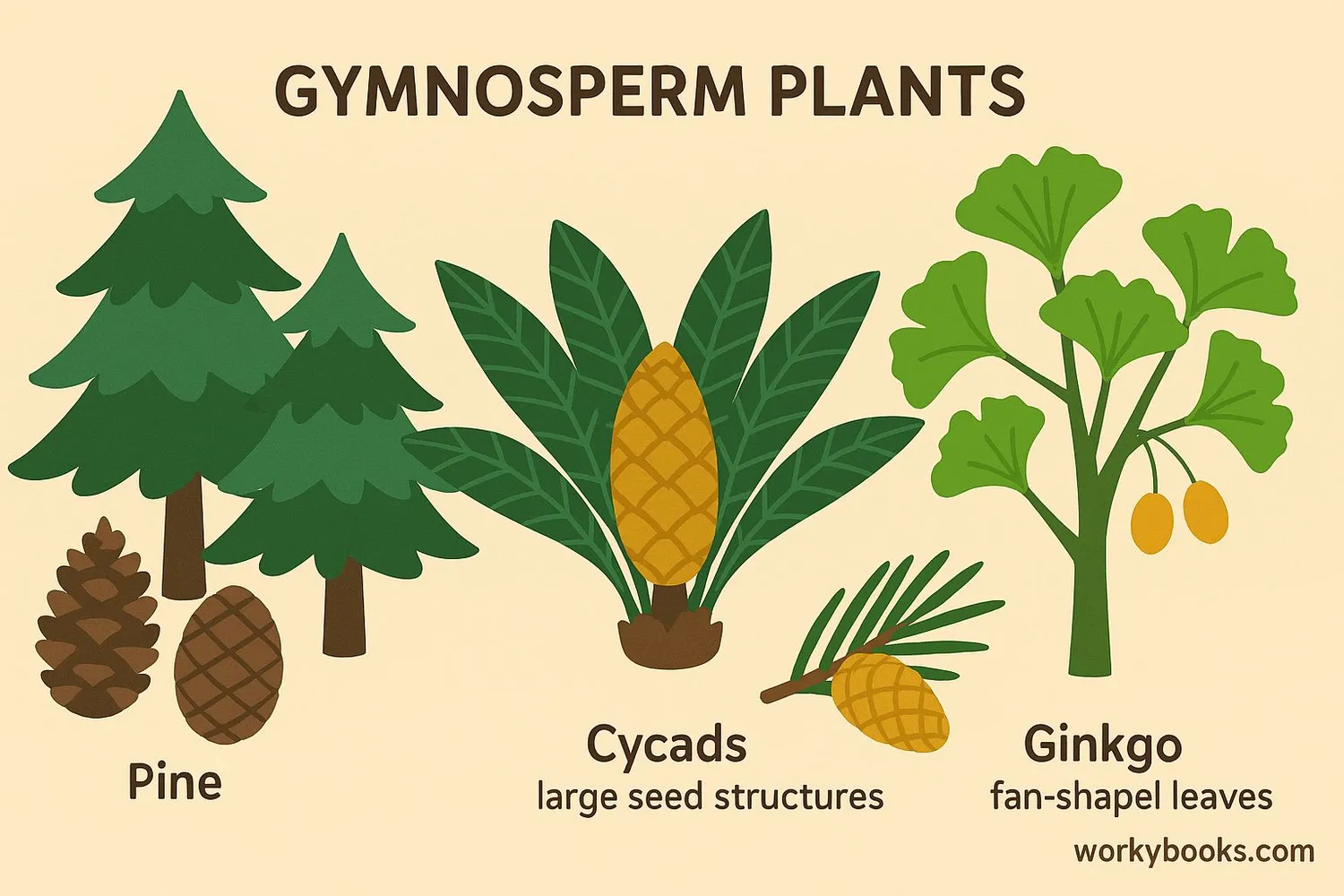
Gymnosperms are a group of plants that produce seeds without flowers or fruits. The word "gymnosperm" comes from Greek words meaning "naked seed" because their seeds are not enclosed in an ovary like flowering plants.
These amazing plants were some of the first to develop seeds, which was a major step in plant evolution. Unlike flowering plants that protect their seeds inside fruits, gymnosperms typically have their seeds exposed on the surface of cone scales or similar structures.
Plant Fact!
Gymnosperms were the dominant plants during the age of dinosaurs! Many conifers we see today existed alongside dinosaurs millions of years ago.
Gymnosperm Characteristics
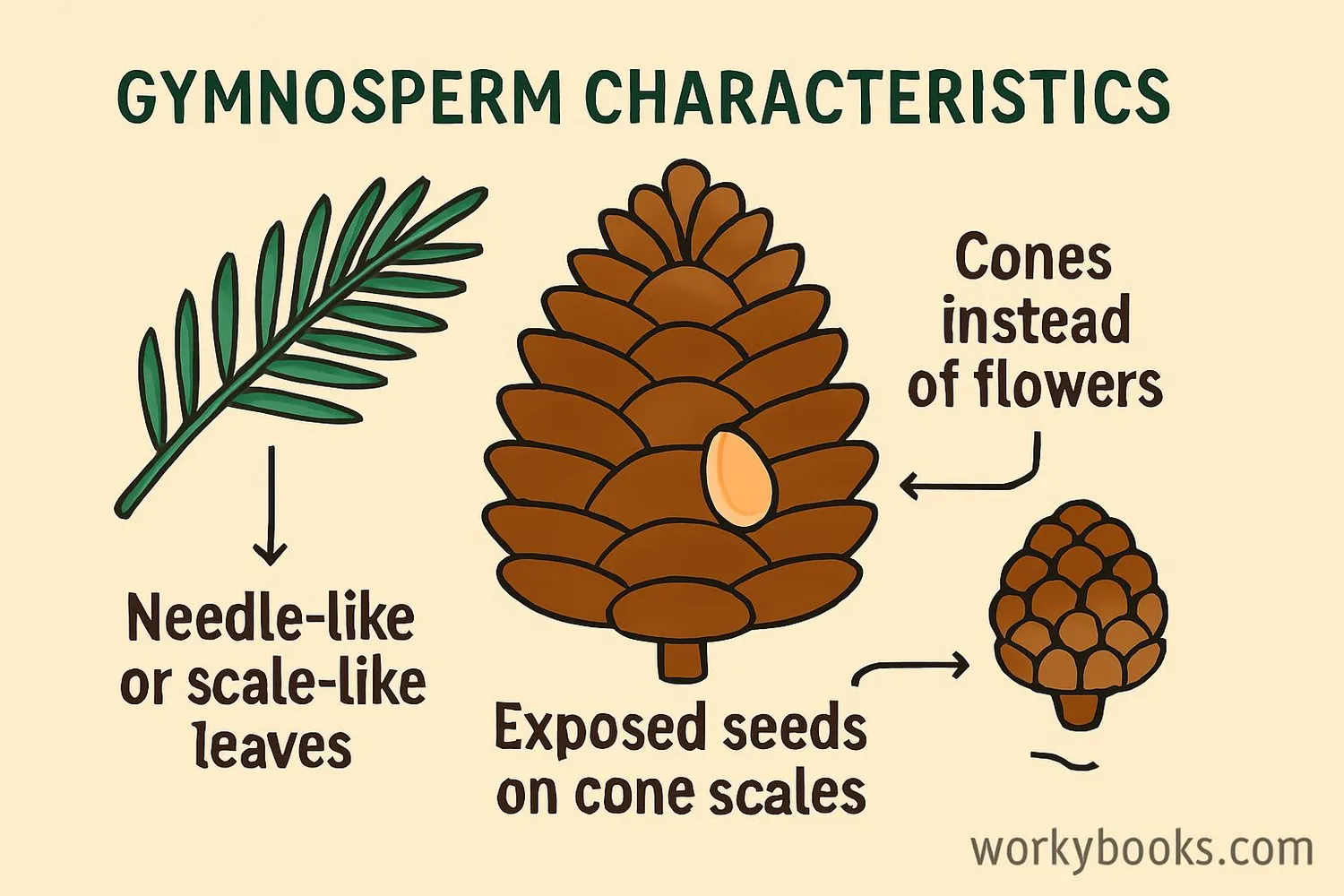
Gymnosperms have several special features that make them different from other plants:
Naked Seeds
Seeds are not enclosed in fruits but are exposed on cone scales
Cones
Most produce cones instead of flowers for reproduction
Needle Leaves
Many have needle-like or scale-like leaves that conserve water
Woody Stems
Most are trees or shrubs with woody stems
Wind Pollination
Typically pollinated by wind rather than insects
These characteristics help gymnosperms survive in various environments, from cold mountains to dry deserts. Their needle-like leaves have a thick waxy coating that reduces water loss, making them well-adapted to harsh conditions.
Adaptation Success!
The needle shape of conifer leaves helps snow slide off easily and reduces water loss, making these plants successful in cold climates.
Examples of Gymnosperms
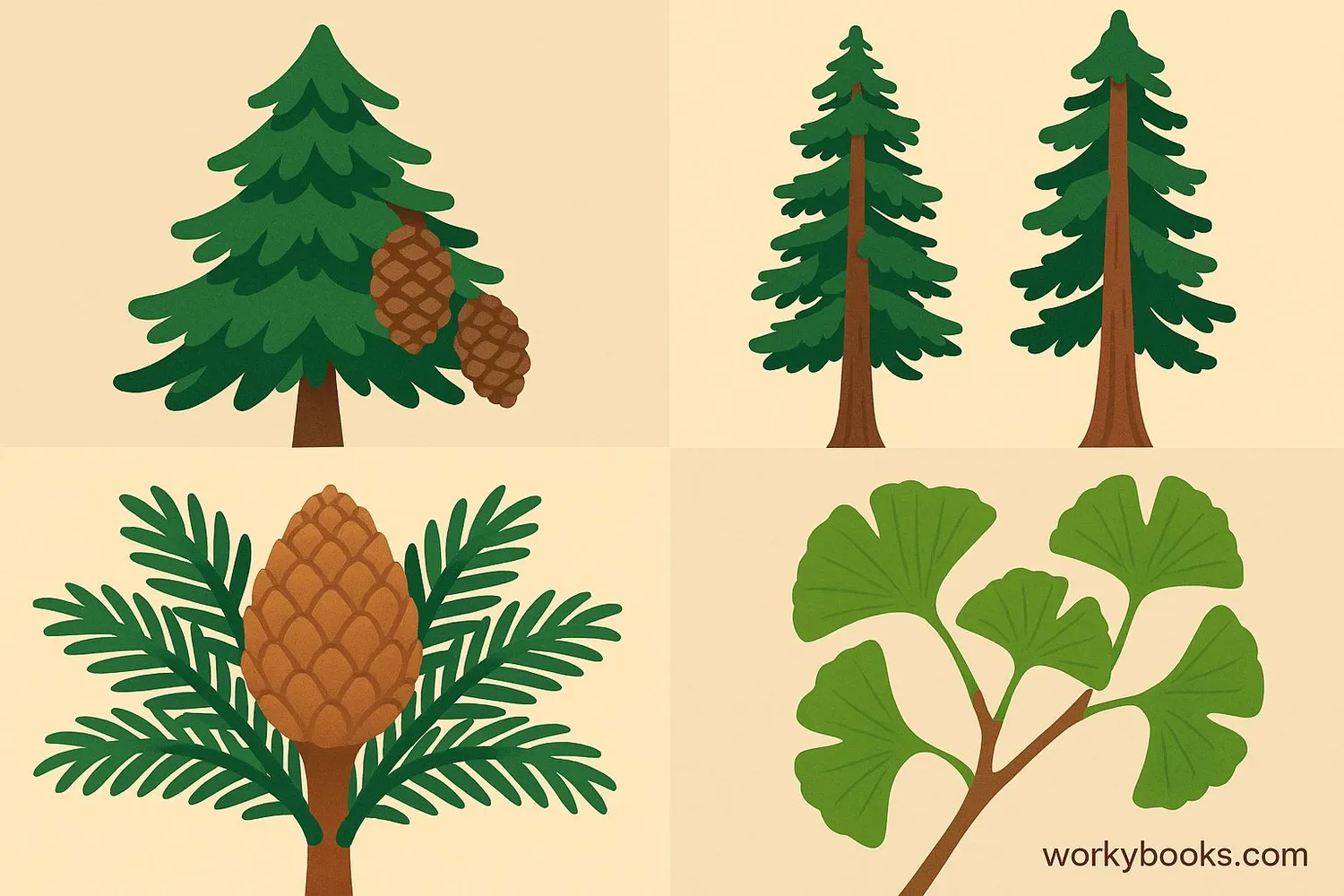
There are many different types of gymnosperms. Some common examples you might recognize include:
Conifers
Pines, spruces, firs, cedars, and redwoods - the most common gymnosperms
Cycads
Palm-like plants with large compound leaves and big cones
Ginkgo
Ginkgo biloba is the only living species with fan-shaped leaves
Gnetophytes
Includes unusual plants like Welwitschia that live in deserts
Conifers are the largest group of gymnosperms with over 600 species. They include some of the tallest, largest, and oldest living organisms on Earth! The giant sequoias of California can grow over 300 feet tall, and some bristlecone pine trees are over 5,000 years old.
Types of Gymnosperms
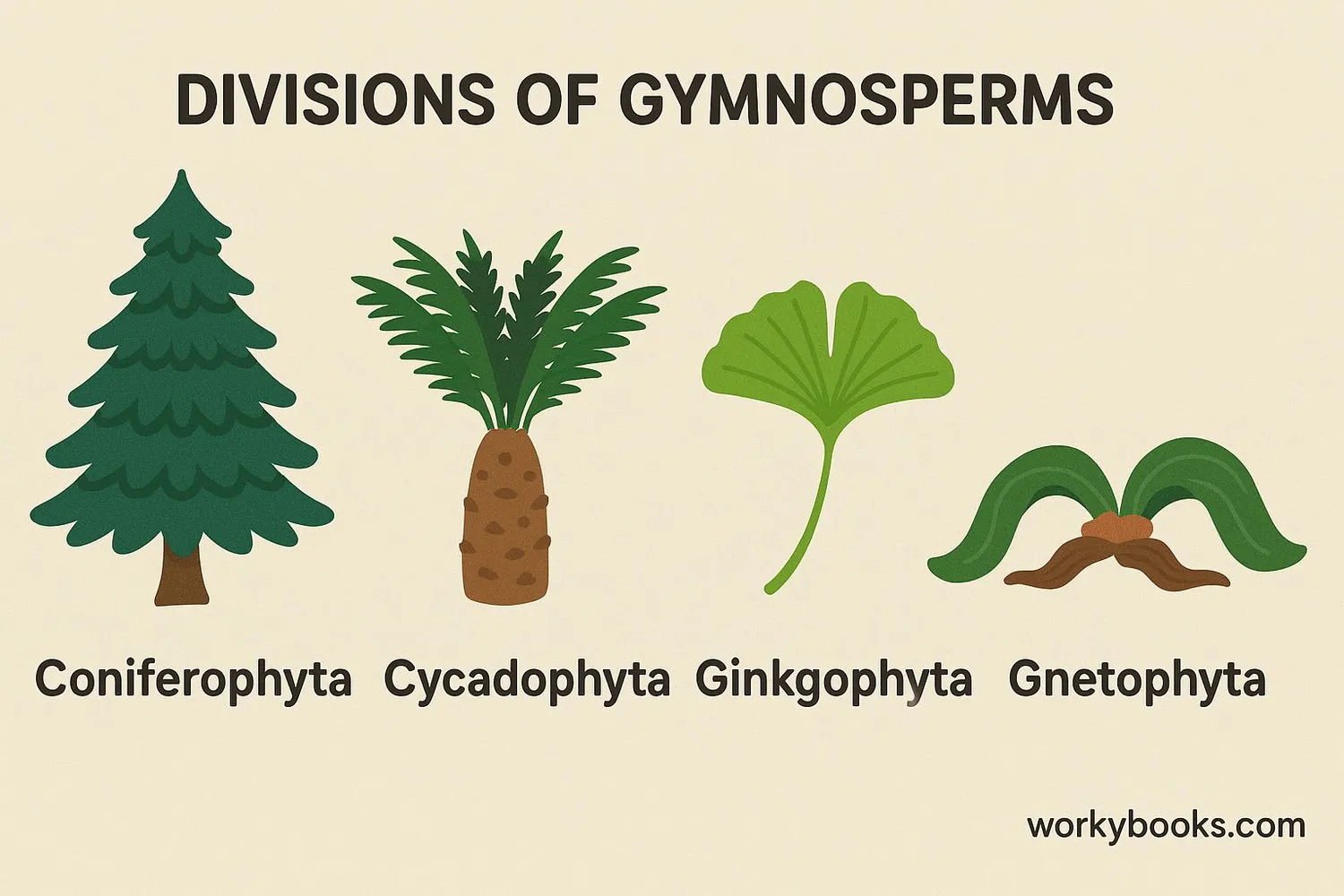
Scientists classify gymnosperms into four main groups:
Coniferophyta
The conifers - cone-bearing trees like pines, firs, spruces, and redwoods. This is the largest group with the most species.
Cycadophyta
The cycads - tropical and subtropical plants that look like palms or ferns but produce cones.
Ginkgophyta
Only one living species - Ginkgo biloba. These trees have fan-shaped leaves and are resistant to pollution.
Gnetophyta
Includes three unusual genera: Ephedra, Gnetum, and Welwitschia. These have some features similar to flowering plants.
Each group has unique features. Conifers are adapted to cold climates with their needle-like leaves. Cycads are often mistaken for palms but are actually gymnosperms. Ginkgo trees are famous for their beautiful golden fall color and medicinal properties. Gnetophytes have some unusual adaptations like the ability of Welwitschia to survive in deserts with just two leaves that grow continuously.
Gymnosperms vs Angiosperms
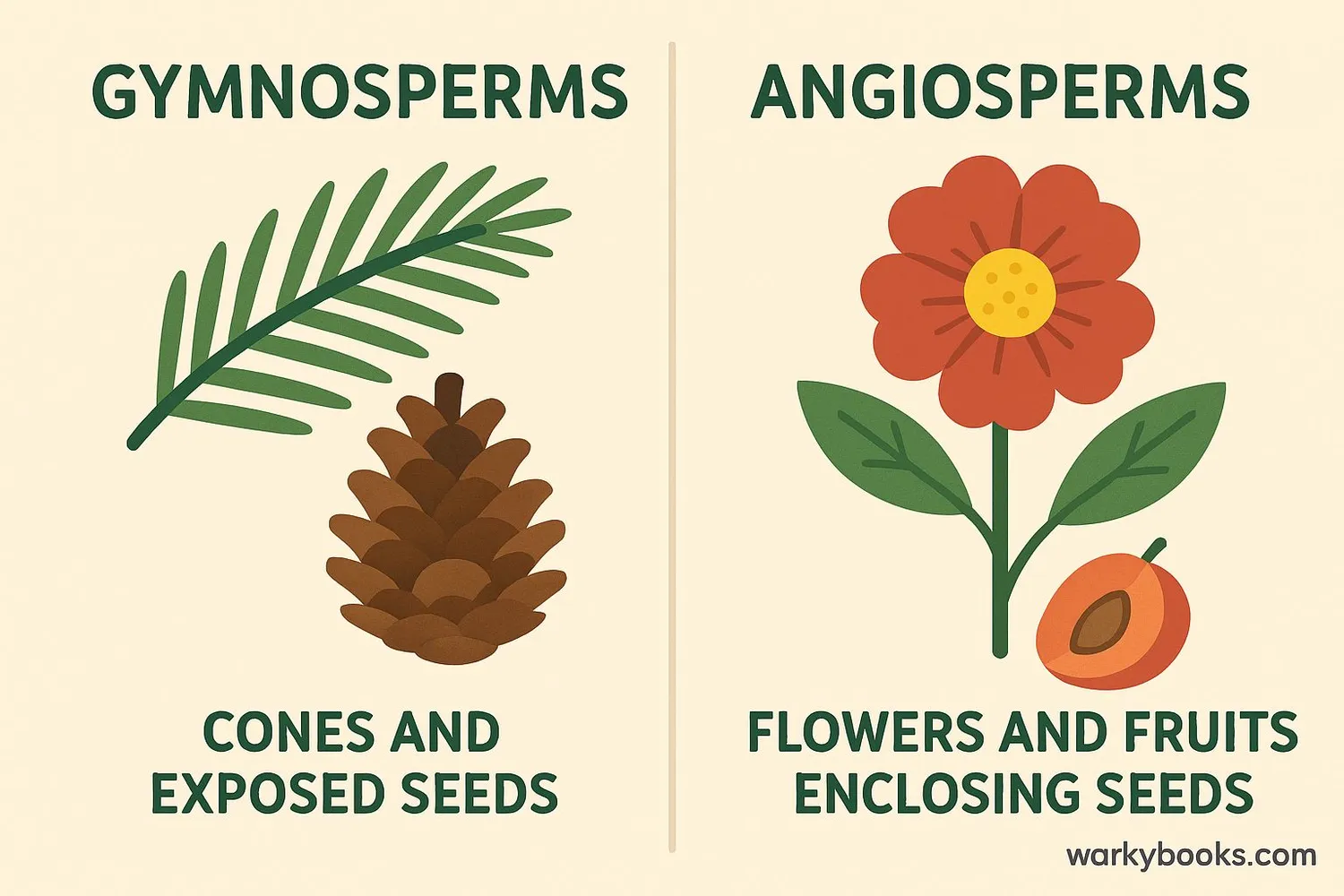
While both gymnosperms and angiosperms are seed plants, they have important differences:
Seed Protection
Gymnosperms: Naked seeds exposed on cones
Angiosperms: Seeds enclosed in fruits
Reproduction
Gymnosperms: Cones
Angiosperms: Flowers
Pollination
Gymnosperms: Mostly wind pollination
Angiosperms: Wind, insect, bird, and animal pollination
Diversity
Gymnosperms: About 1,000 species
Angiosperms: Over 300,000 species
Wood Type
Gymnosperms: Softwood
Angiosperms: Hardwood
Angiosperms (flowering plants) are more diverse and widespread today, but gymnosperms are still ecologically important, especially in colder regions and higher elevations where they often dominate the landscape.
Evolutionary History
Gymnosperms appeared before angiosperms in evolutionary history. They were the dominant plants during the Mesozoic Era (age of dinosaurs), while angiosperms became dominant later.
Gymnosperms Quiz
Test your gymnosperm knowledge with this quiz! Answer all 5 questions to see how much you've learned.
Frequently Asked Questions
Here are answers to some common questions about gymnosperms:
Plant Trivia
Discover some amazing facts about gymnosperms!
Living Fossils
Some gymnosperms like the ginkgo tree are called "living fossils" because they have remained virtually unchanged for over 200 million years, dating back to the time of dinosaurs!
Size Extremes
Gymnosperms include both the world's tallest trees (coastal redwoods) and the world's most massive trees (giant sequoias). Some bristlecone pines are among the oldest living organisms at over 5,000 years!
Fire Adaptation
Some conifers like the jack pine have cones that only open and release seeds after exposure to the high temperatures of forest fires, ensuring new trees grow in the cleared space.
Unique Species
Welwitschia mirabilis, a gymnosperm from the Namib Desert, has only two leaves that grow continuously throughout its life, which can span over 1,000 years in the harsh desert environment.


